
Board integrates demand planning with supply and S&OP in one unified model, enabling faster scenario evaluation, tighter alignment, and financially driven decision-making.
This website will offer limited functionality in this browser. We only support the recent versions of major browsers like Chrome, Firefox, Safari, and Edge.
Drive sales and improve monitoring & control with sales planning software that gives you end-to-end visibility from customer segmentation to signed order

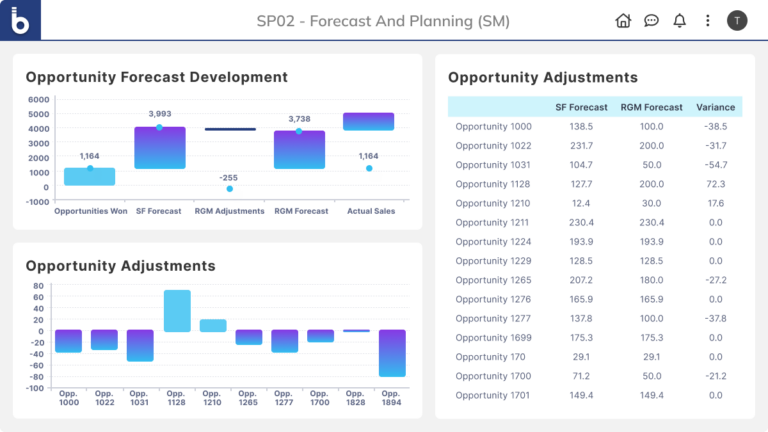
Monitor and control sales performance, focus commercial efforts on strategic targets, plan key sales value drivers, and re-orient commercial action plans according to in-depth sales insights with the Board Enterprise Planning Platform.
Start your sales planning journey by extracting relevant insights about customer needs, preferences, and buying behavior to drive sales budgeting and quota and territory planning.
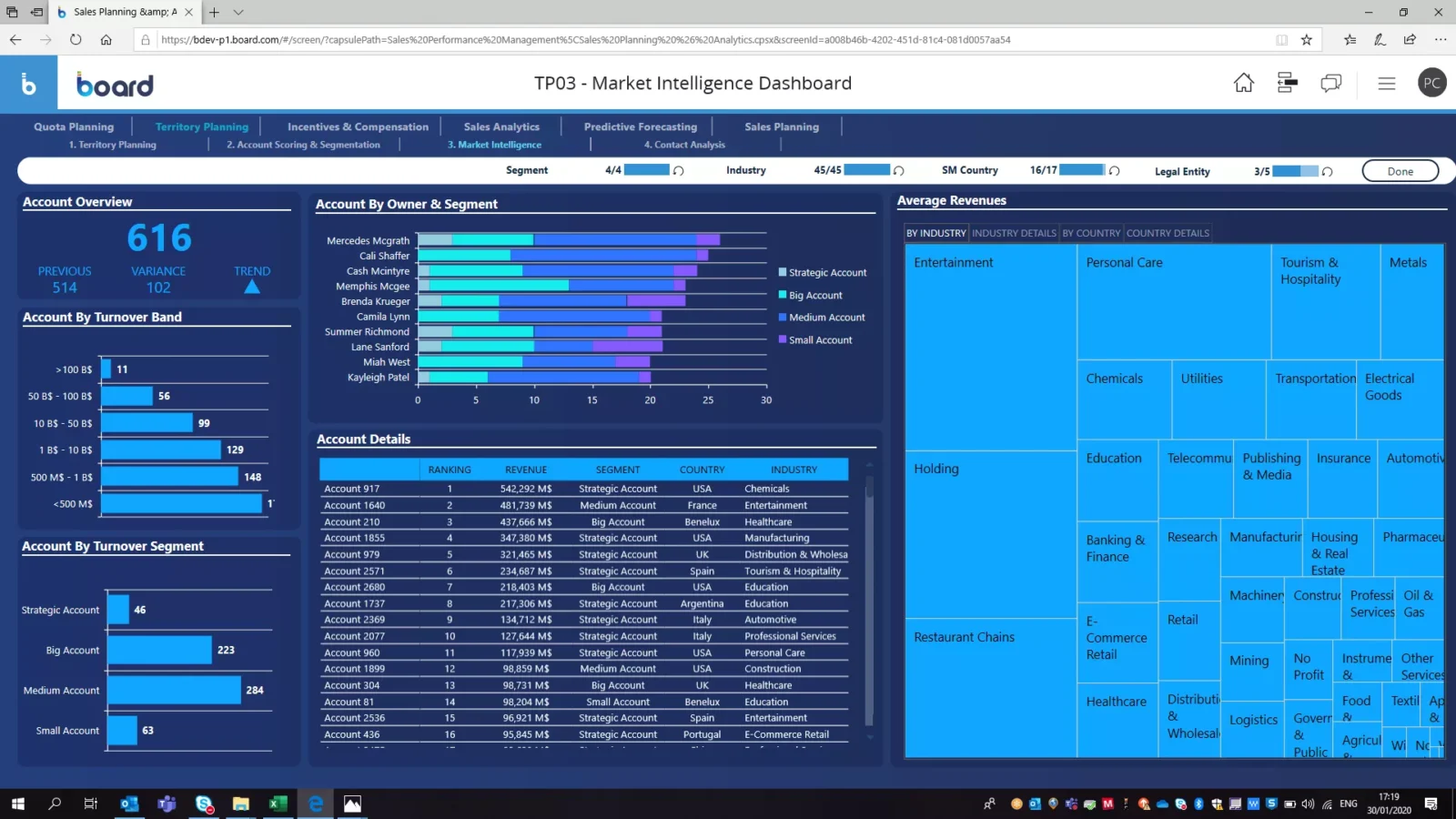
Easily define and analyze your customer base in terms of needs, preferences, key buying factors, business attributes (i.e. industrial sector, size, and country), and key commercial performance indicators (i.e. volume growth, cross selling results, and gross margin increase)
Perform customer segmentation by applying Board’s native K-means clustering algorithm to your data set to create more effective and significant segments
Explore your customer data and get the business insights you need to detect customers’ sales potential and support your customer value optimization strategy
Support customer portfolio construction within sales budgeting and quota & territory planning processes, providing all necessary information to match each customer with the right rep
Drive your sales budgeting process within a workflow environment, taking advantage of the platform’s native business modeling and simulation features.
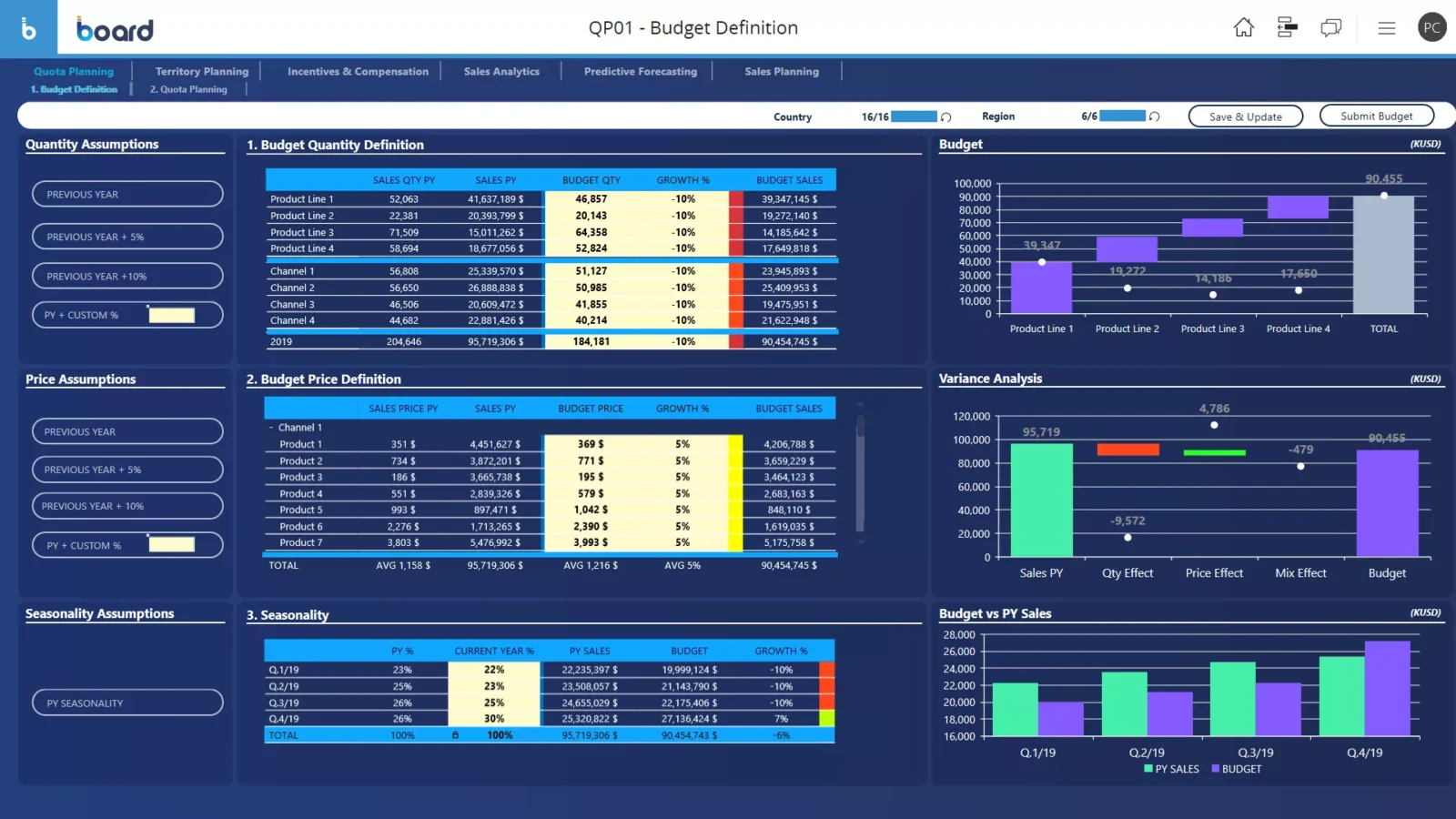
Exploit fully customizable calendar features which enable sales budgeting to be set up on a yearly, monthly, weekly, or daily basis, or alternatively as a rolling forecast to allow budgeting assumptions to be revisited and updated throughout the year
Take advantage of Board’s flexibility, choosing between a traditional budgeting approach which takes the previous period’s figures as a baseline for the next one, or more sophisticated methods such as driver-based budgeting and zero-based budgeting
Exploit inbuilt modeling features, allowing you to adapt the sales budgeting structure to the corporate business model layout whether your company is order-driven or inventory-driven, B2B or B2C, services or product based
Use the right key value drivers in a top-down or bottom-up approach, with the ability to propagate changes across multiple dimensions and hierarchies and drill down to the lowest level of detail
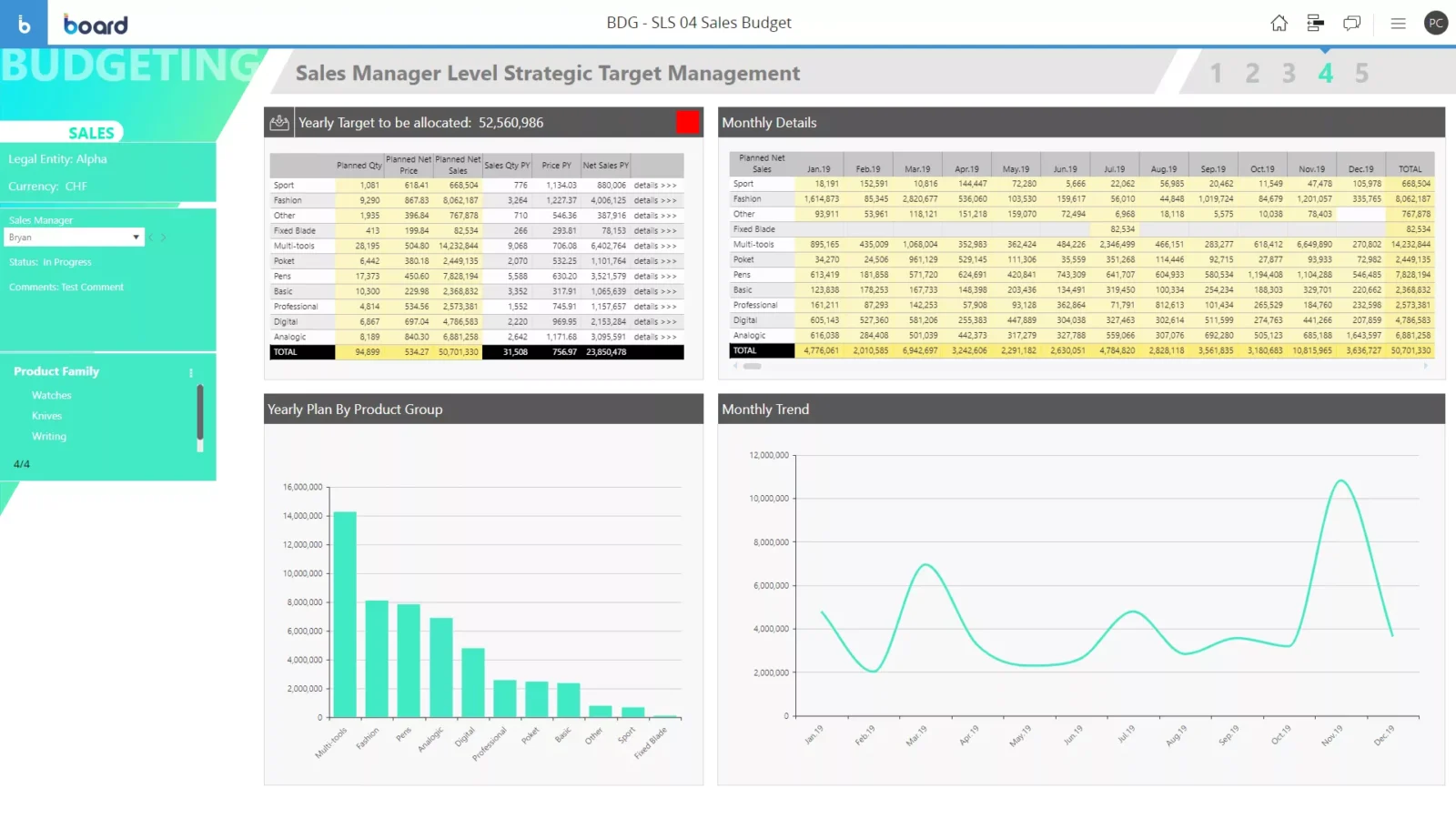
Use what-if and what-for analysis, scenario modeling, and sensitivity analysis to better understand the effect of key value driver changes on your commercial results
Conduct gap analyses between current data and past data or between actual and target data contained in your sales budget, representing your performance within a multi-dimensional environment and dissecting your results in terms of volume, price, and mix effects
Take advantage of the native workflow features, work together on a shared report while interacting in real time through an embedded chat, and create & share your analyses on the fly, facilitating collaboration among all stakeholders involved in the sales budgeting process
Build up sales budgeting using a quota and territory planning methodology which connects customers, reps, and geographical areas.
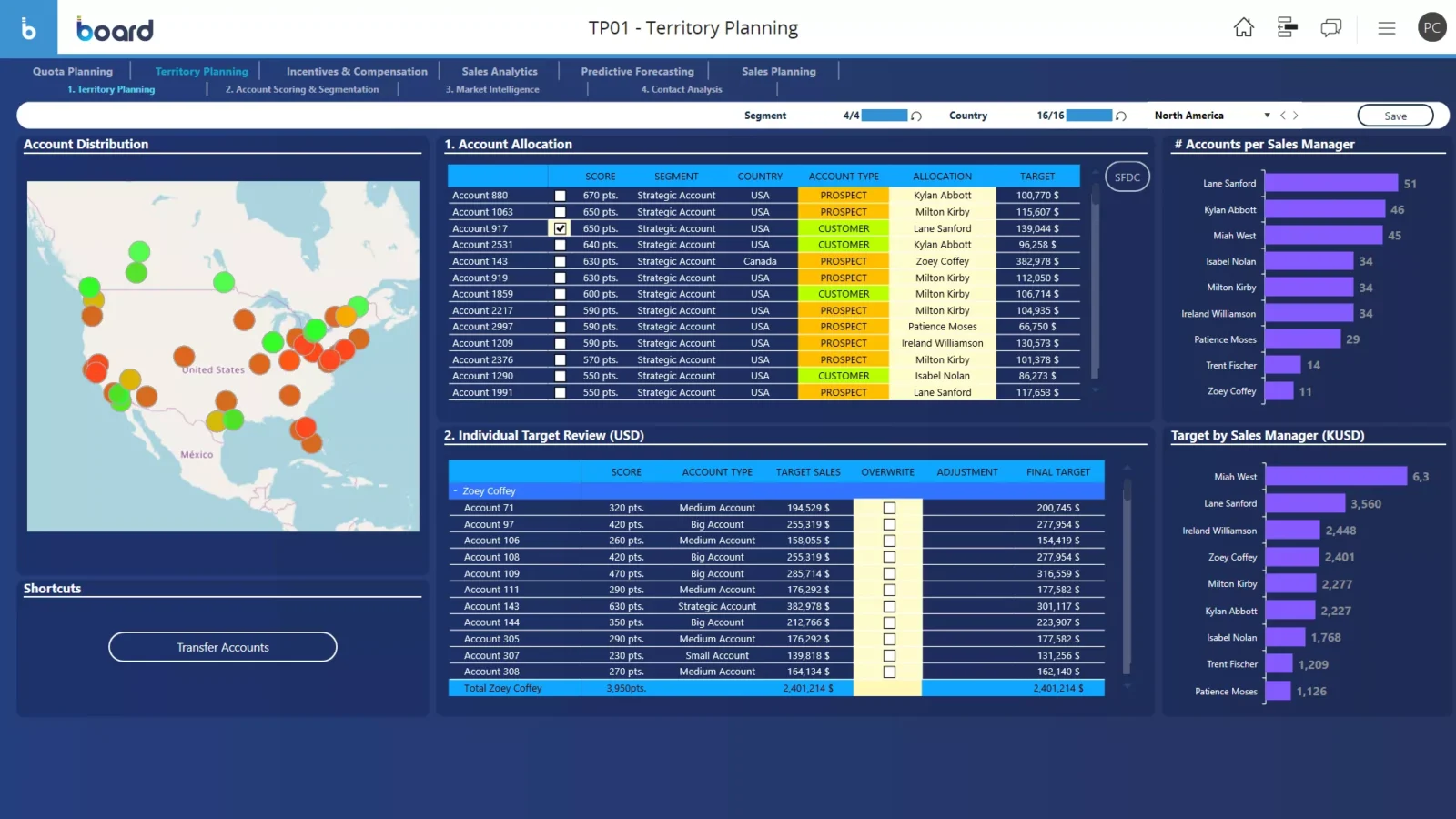
Create your sales budgeting recipe using customers, reps, quotas, and territories as the main ingredients
Plan a quota for each rep by allocating them a specific customer portfolio, defining the sales target for each existing customer, and estimating the impact of new customer acquisition
Plan sales objectives for each territory, aggregating the sales targets for new and existing customers. Identify and solve issues in terms of territory coverage by the sales force and overlapping among reps
Consolidate each rep’s quota or territory target in order to verify if corporate sales targets are addressed, and dynamically solve misalignments
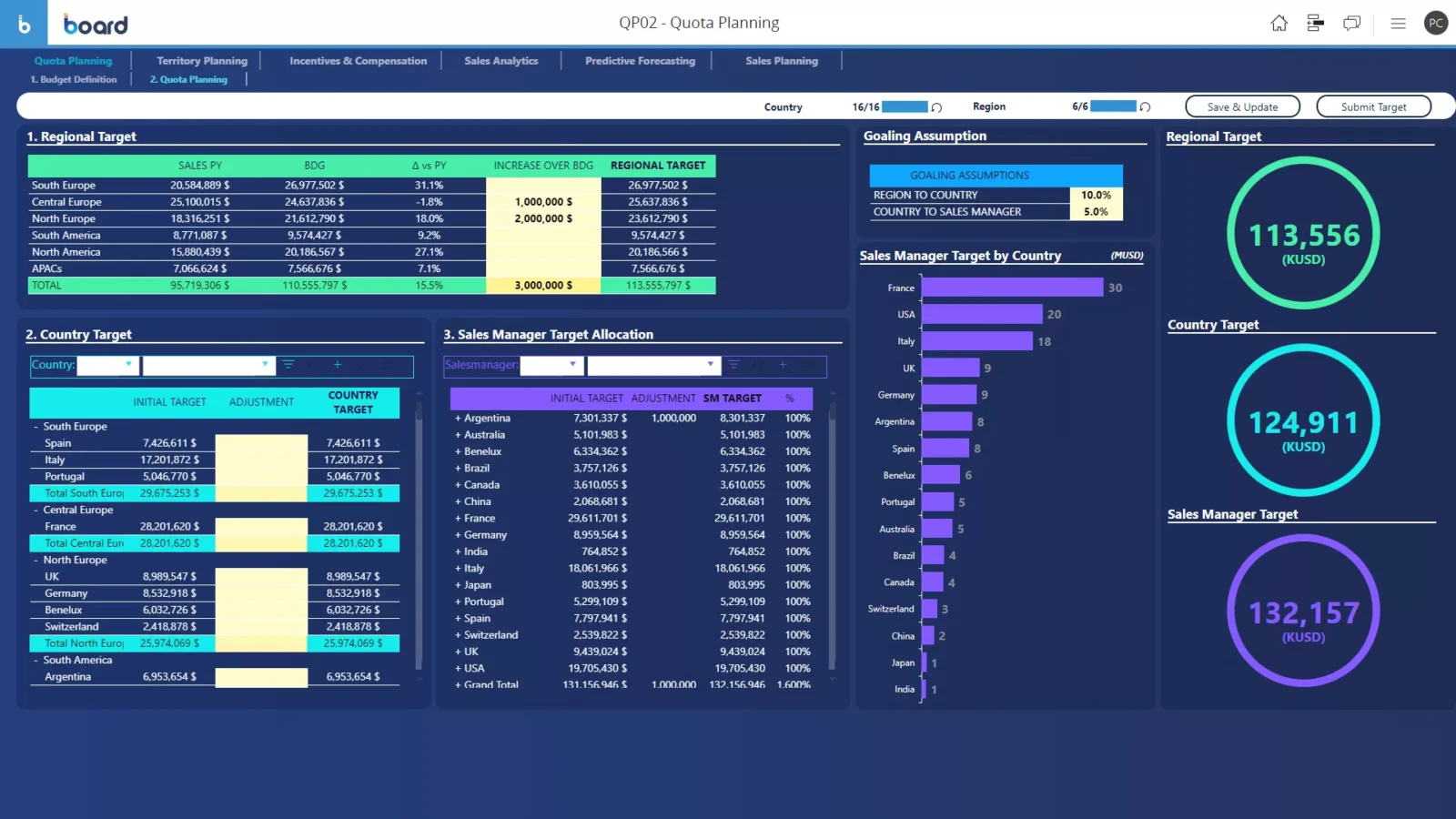
Optimize customer portfolios and sales force territory allocation, taking multiple criteria into consideration such as customers’ potential and size, reps’ capabilities and sales history, and travel time
Easily acknowledge changes within the allocation of sales targets or customers to reps, maintaining alignment between quota and territory planning
Ensure integration and alignment between quota & territory planning and incentive & compensation management
Drive your sales forecasting process with the ability to revise sales budgeting figures in one centralized platform that integrates data from multiple sources, including transactional and legacy systems.
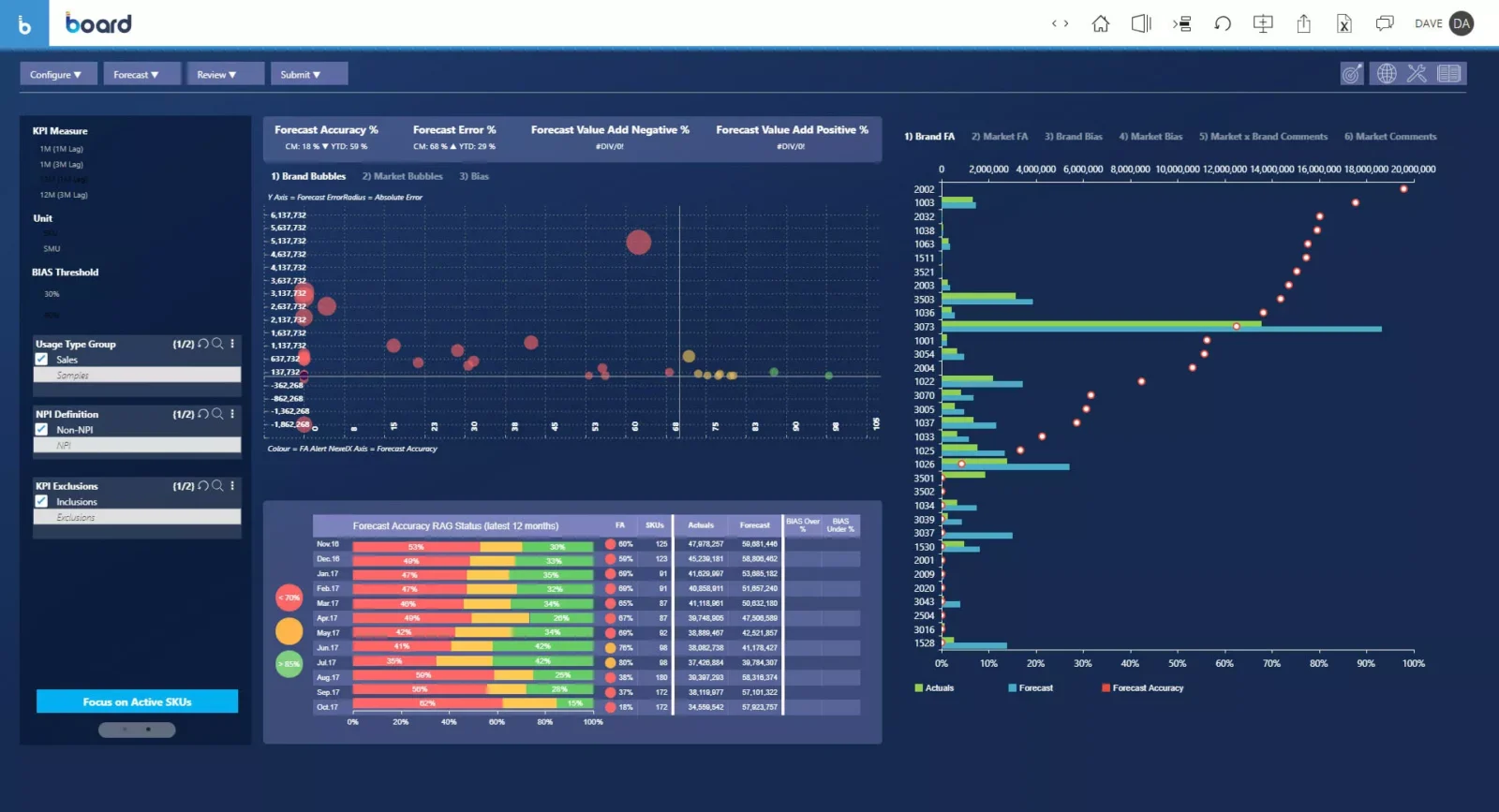
Easily implement rolling forecasts and exploit fully customizable calendar features, native within the platform, which enable sales forecasting to be set up on a yearly, monthly, weekly, or daily basis
Acknowledge actual figures relative to the proportion of your chosen time horizon which has already elapsed, and respectively generate year-to-go, month-to-go, and week-to-go predictions. Accomplish sales forecasting projections based on actual acquisition figures, updating and amending estimates previously generated by the sales budgeting process
Automatically feed your forecasting process with the CRM data and build the baseline for managerial assessment and subsequent sales projection
Easily retrieve data from multiple sources such as transactional and legacy systems, acquiring actual data from bookkeeping activities and closing registrations/adjustments from the general accounting process
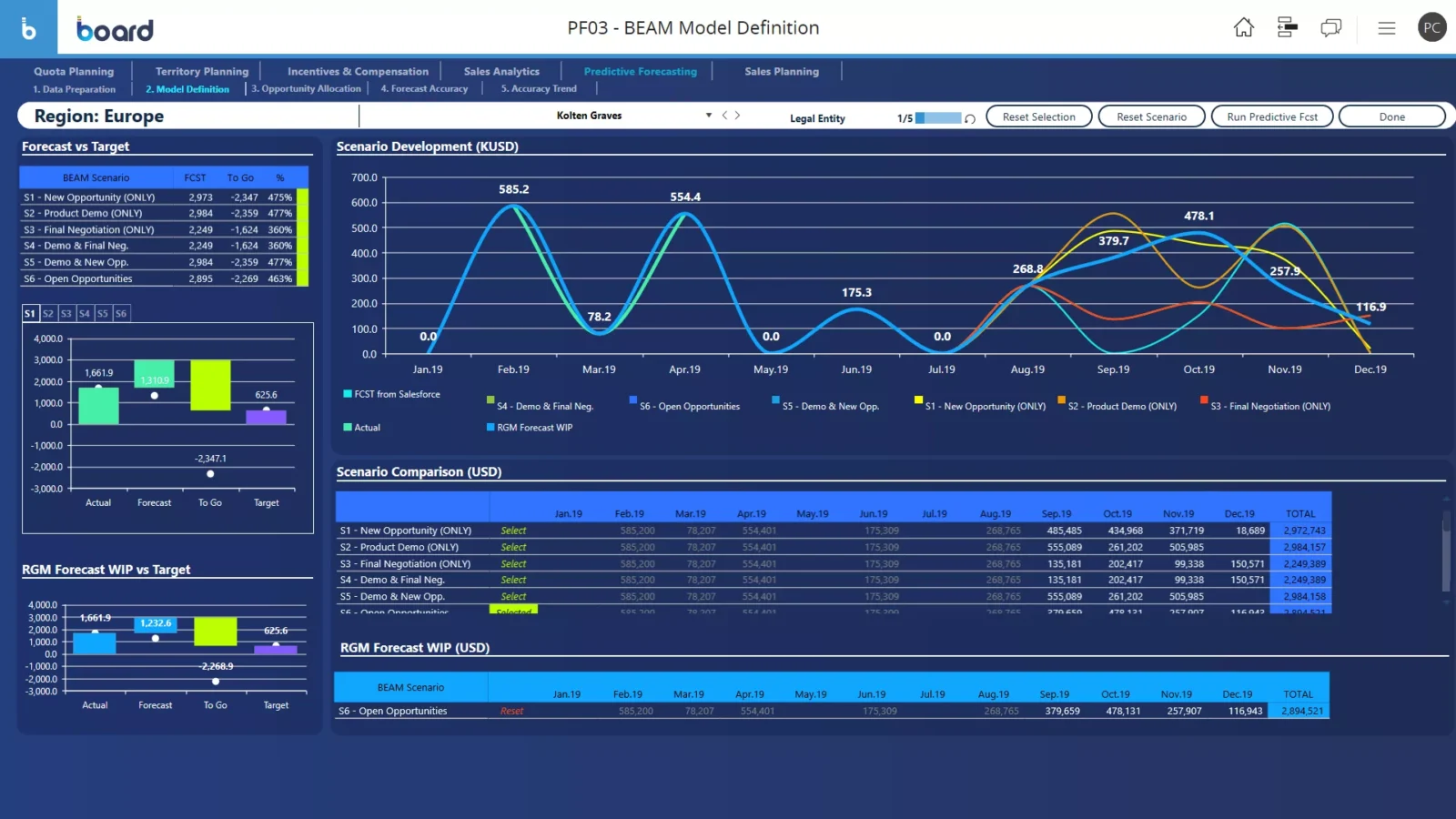
Exploit simulation features to better understand the impact of actual data on the feasibility of the figures in the sales budget and effectively calibrate the size of new projections
Easily conduct variance analyses, measuring the difference between sales forecasting data, actual sales data, and sales budgeting data within a multi-dimensional environment (i.e. channels, customers, geos, business lines, and products) and dissect your results in terms of volume, price, and mix effects

Board integrates demand planning with supply and S&OP in one unified model, enabling faster scenario evaluation, tighter alignment, and financially driven decision-making.